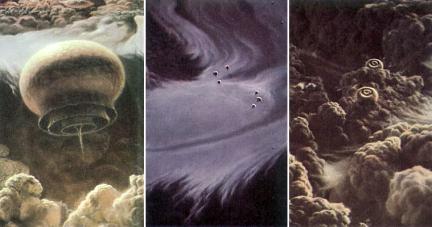When mankind set out to observe every major known body in the Solar System, we expected to find that the planets were easily the most interesting places to study. The assumption would have been that most, if not all the moons, were just like our own – cratered. Perhaps they were made of some different materials like ice, but for the most part we expected craters. Apart from that, all we knew was that Titan would be an interesting place because it had a substantial atmosphere. However, once the grand tour of the Voyager crafts were over, we wound up looking far longer and more dumbfounded at the images of a shockingly alien and volcanic Io, or the intricately cracked shell surface of Europa. Titan, it turned out, only frustrated us as Voyager was unable to make out a single damn feature on the surface due to its thick and hazy atmosphere. Few things turned out to be as expected.
As I suggest in my life-on-Titan fantasy, we really don't know what and where we may find just about anything. A few years ago we talked about water on Mars in terms of millions of years ago. Then we talked about the water on Mars scenario as being played out perhaps a few hundred-thousand years ago. Now we find out that at least part of the water on Mars story is as young as last week. Point being that we often find nothing where we expect to find something and find everything where we expected to find nothing. So maybe by these standards the only other life in our Solar System is a few thousand miles down deep in the clouds of Jupiter? Maybe we will one day find microbes in hibernation on a wayward asteroid that was blown off the surface of some fantastic planet and traveled the millennia across time and space from a wholly different star system?
I always recall the images presented in “Cosmos” of what Carl Sagan imagined beings from Jupiter might be like. He imagined they would be quite large and have a structure that would thrive in the intense pressure of the Jovian atmosphere. Looking more like some sort of massive sea creatures, they would float across a limited zone of the Jovian atmosphere and have no need of a terrestrial surface. Sagan even imagined that there might be other Jovian life-forms which could be natural predators of the floaters. These creatures looked like flying fish and seemed even more fantastic than the ones that were imagined previously. But what was exciting was that a serious mind like Carl Sagan didn't consider such possibilities complete folly… surely he was aware their likelihood was slight, but he wasn't beyond imagining the possibilities. For me a child of 8 years, that inspired me. A serious and important man like Sagan thought there could be life, not just microbes on Mars, but creatures on a place as exotic as Jupiter.
Awesome.